BTB Speaks to
Morii Design
Morii Design’s Brinda Dudhat on how a deep reverence for Indian craft and a taste for contemporary design, has driven them to create textile artworks at their design studio in Gujarat’s Gandhinagar.
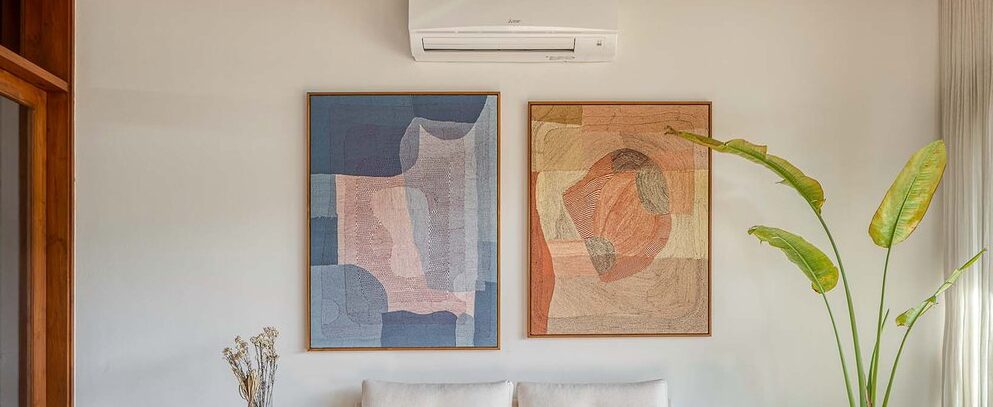
Written by: Manica Pathak
A single textile wall art from Morii can take up to 2-3 months to complete following their initial conceptualisation. At first glance, they seem digitally created, but are in fact hand-embroidered works, echoing the skills of Indian artisans. When Blur The Border spoke with founder Brinda Dudhat, a textile graduate from NID Ahmedabad, she had just returned from a show at Perth’s Holmes à Court Gallery in Australia, where Morii’s wall arts showcased Indian textiles in a different light, contrary to their traditional wearable formats. “We created a piece with seven panels to talk about climate change. Those are warning stripes. Each panel represents a decade transitioning from blue to red, showing how in 70 years, the temperature of the Earth will rise.” says Brinda reflecting the brand's attempt to explore the intersection of art and design.

Brinda Dudhat & Sonu Yadhav (Founders of Morii Design)
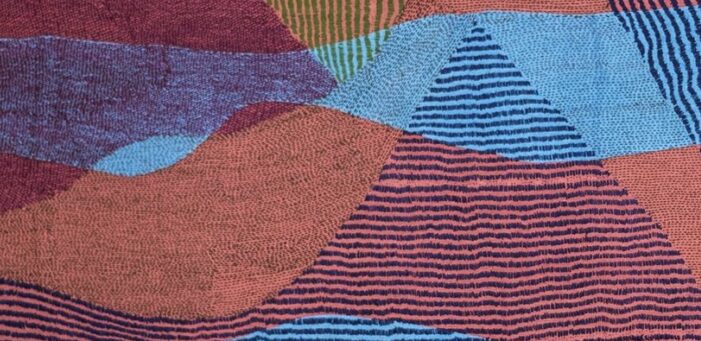
Sujni Embroidery
In a way, the brand’s name has also evolved organically to represent its ethos and story. Derived from the Japanese word meaning forest, Morii was inspired during Brinda’s exchange semester at the TAMA Art University in Japan where she studied fibre, textile and weaving art. Here, she also discovered the concept of Morii girls- a subculture that values nature’s abundance and simplicity. In reflecting on her journey, Brinda as a design student was also exposed to various crafts and craft villages as part of her curriculum at NID Ahmedabad, where she notes a difference compared to her experience at TAMA. “There are beautiful traditional techniques in Japan but there are hardly any artisans left practising them. Whereas in India there are so many artisans, she recalls, “but because of mass production, the quality of that craftsmanship is deteriorating. So, we need to make a clear distinction between authentic crafts and their replicas. For instance, Kalamkari work from Andhra Pradesh, traditionally hand-painted with natural dyes, is now also available in screen-printed forms,” Brinda says, emphasising the initiatives the industry can take to accelerate the growth of legacy crafts and textiles in the country and beyond.
“That one year of hands-on experience showed me the potential of craft, not just in terms of creativity but also in the impact it has on the artisans’ lives. I witnessed firsthand how fair wages for skilled work could empower women, giving them financial independence. It was incredibly fulfilling, and it was in that moment I realised that working with traditional crafts was my calling”.
This cognition, for preserving authentic crafts, has also propelled Morii into several international spaces, including XTANT in Spain’s Palma De Mallorca and Berlin, since its inception in 2019. However, "Textiles as a form of art are not yet widely accepted. In the West, craftwork is often viewed as an individual effort, more commonly regarded as a hobby rather than art.” “In contrast, craft is deeply rooted in the Indian community. It represents the identity of a whole group of people, passed down through generations," she says.
This sense of community —so deeply shaped by Indian textiles— is reflected eloquently in their wall art — typically ranging between 30” to 70”— and has now garnered attention amongst architects, adorning walls of office spaces and homes, Morii’s journey began on a relatively different note. “We started as a garment brand making one-of-a-kind embroidered jackets,” says Brinda. However, an unexpected spark of creativity led one thing to another. “Once we just thought of framing a panel of one of our jackets. An architect found it really interesting and asked to use it in his project. From there, more architects and designers became interested in our work through word of mouth, and the brand grew organically,” she says.
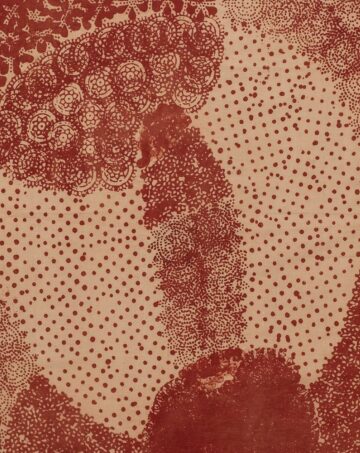
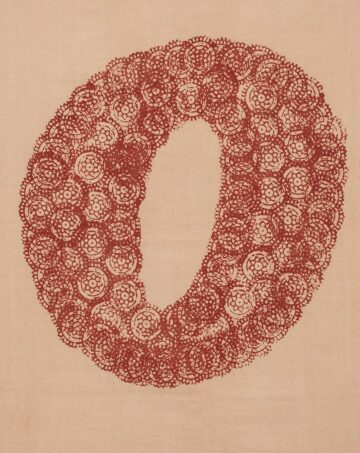
Bela Block Print
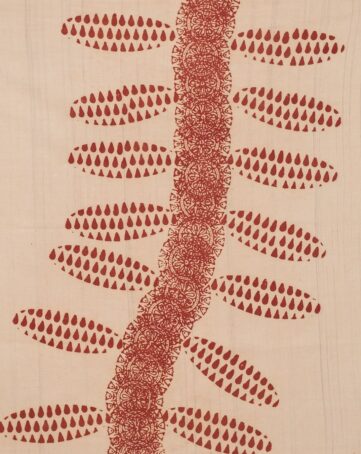
However, the artisans associated with Morii deserved their own spotlight. After graduating from NID, a World Bank-funded project led her to work closely with Sujani artisans in Bihar. “That one year of hands-on experience, I witnessed firsthand how fair wages for skilled work could empower women, giving them financial independence. It was incredibly fulfilling, and it was at that moment I realized that working with traditional crafts was my calling."Today, artisans from over nine villages, skilled in over 5 kinds of crafts are a part of Morii. Brinda recalls, “The Jat artisans, known for cross-stitch embroidery, were one of the first to partner with me on this journey." And what followed was very organic. “Then COVID hit, and the artisans I had worked with in Bihar reached out for more work and we resumed our collaboration on Sujani. Then gradually, we began working with a weaver family in Kutch to develop base fabrics for our embroidery. Over time, we expanded to include the Rabari community and most recently, we started working with Bela artisans who specialize in block printing." she says.
For Morii, the process isn't the one with shortcuts and instead begins, months or sometimes even a full year in advance. “The first step is always learning about the history of the craft and its current state. Every month, we visit the craft communities to explain the work and guide them through the embroidery process,” says Brinda. “We undertake a six-month training program with the artisans. Although they have the skills, many have stopped practising, so their techniques need some polishing. During this time, we create our own little stitch libraries where we take out old stitches and create new and different combinations. Over these six months, the artisans practice these new techniques, allowing them to adapt to our approach,” she reflects on how artisans with generationally-rooted techniques have eagerly embraced the brand’s innovative spin on traditional crafts.
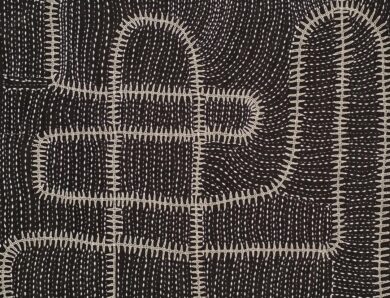

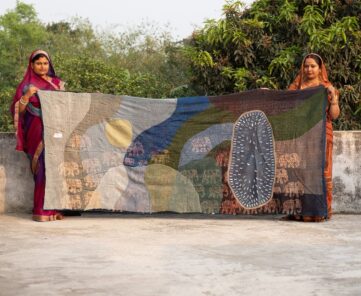
And then it actually gets down to creating, “I initiate the work by selecting the colours, says Brinda, “And the process is very intuitive for me. I convert my sketches into textile works from a huge pile of textiles that I have collected over the years.” The true pride of Morii, however, has emerged from co-creation.” She continues, "But when it comes to stitching, the artisans—who are experts in embroidery—take over.” Although it may seem like a tall task, Brinda embraces it with a pinch of salt, travelling frequently to villages and studying the different layers of each craft before the wall arts come to life. “And I believe it's this narrative that resonates with our customers. Our mission is to tell the true stories behind the craftsmanship and the artisans,” she emphasizes, affirming that to really understand a craft it is imperative to experience the places and the people who are their custodians.
The future for Morii looks very clear to Brinda. While clothing seems to be part of its future, the focus is primarily on going beyond the conventional meaning of textiles—harnessing their potential and making a larger impact globally. “Right now, I am focusing more on expanding several 2D artworks I have created, into 3D forms with meaningful messages. I am planning two large-scale installations for this year. While wall art will remain part of our work, my goal is to explore textile sculptures and installations. This series aims to raise awareness about climate change and explore whether it is possible to reverse the repercussions. It is titled ‘Hope’,” she concludes.